Can You Hold a Puppy TOO Much? Balancing Affection and Independence
Puppy cuddles are one of life’s simple joys, offering comfort, love, and endless cuteness. But as you scoop up your furry bundle of joy for the umpteenth time, you might start to wonder: “Can I hold my puppy too much?”
While the bonding experience is invaluable, is there such a thing as overdoing it? From socialization to independence, there are several factors to consider when it comes to how much snuggle time is appropriate for your pup.

In this article, we’ll explore the pros and cons of holding your puppy and offer guidelines for striking the right balance.
Is Holding a Puppy Too Much Safe?
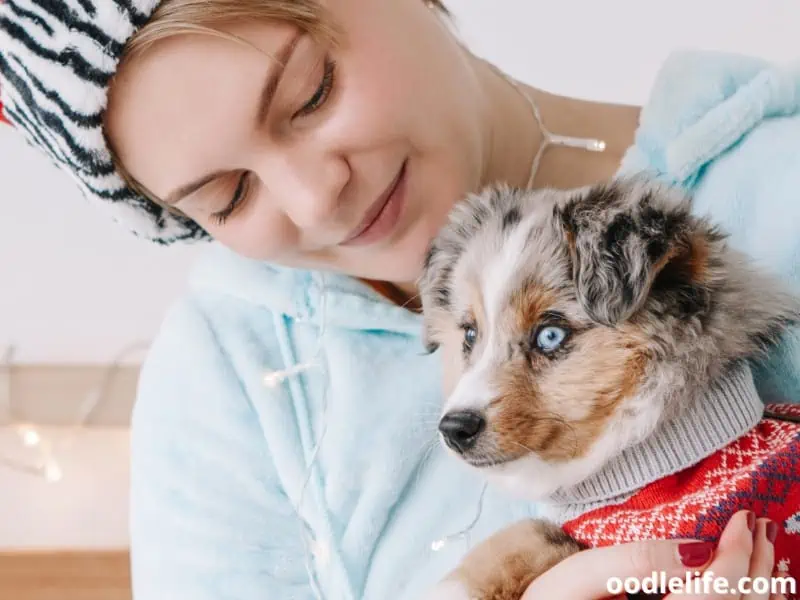
Risks and Benefits
Holding a puppy can have both positive and negative effects. On one hand, it helps in bonding, socialization, and building trust between you and your new furry friend. On the other hand, excessive holding may lead to over-dependency and a lack of independence in the puppy.
For instance, imagine you’re constantly carrying your puppy around like a precious gem. The puppy starts to feel like they’re the center of the universe, but once you put them down, they might panic without your constant attention.
Body Support
When holding a puppy, it’s essential to support their body correctly. Keep one hand underneath their chest and use the other hand to support their hips. This way, you distribute their weight evenly and avoid putting unnecessary stress on their fragile bones and joints.
Think of it like holding a wiggly water balloon: you wouldn’t grasp it tightly or lift it from only one end, right?
Injuries and Prevention
Puppies can be prone to injuries if they’re held incorrectly or too often. Jumping out of your arms or squirming to escape may result in sprained or fractured limbs.
To prevent injuries, it’s crucial to know when not to hold your puppy. If they start to squirm or show signs of discomfort, it’s time to put them down. Additionally, making sure they have a safe, comfortable space to explore on their own will allow them to develop confidence and independence.
Remember, the floor is like a mini adventure park for your puppy to enjoy – so let them roam free and discover things on their own.
In conclusion, holding a puppy too much can be less beneficial than it seems. While there are instances where it’s necessary, moderation is key to ensure the puppy’s safety and proper development. So, the next time you can’t resist your puppy’s adorable eyes and snuggles, just remind yourself that sometimes, a little tough love goes a long way.
The Bond Between Puppies and Humans
Affection and Attention
Puppies, just like us humans, crave love and attention. When we hold our furry friends, it strengthens the bond between us and our pups. A gentle pat, a belly rub, or a simple hug can make a world of difference to our little canine companions.
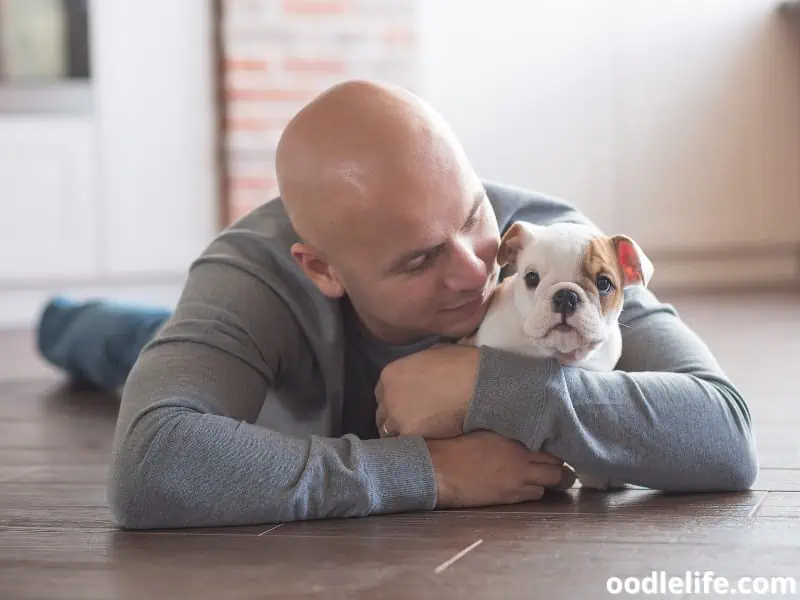
They thrive on this love and affection, just like we do! Sometimes, you might even catch your puppy nudging you with that little snoot, seeking the warmth of your embrace.
Socialization
Socialization plays a crucial role in a puppy’s development. Introducing them to new people, environments, and other animals is essential for their confidence and overall well-being. A well-socialized puppy grows up to be a well-adjusted adult dog, ready to handle various situations with ease.
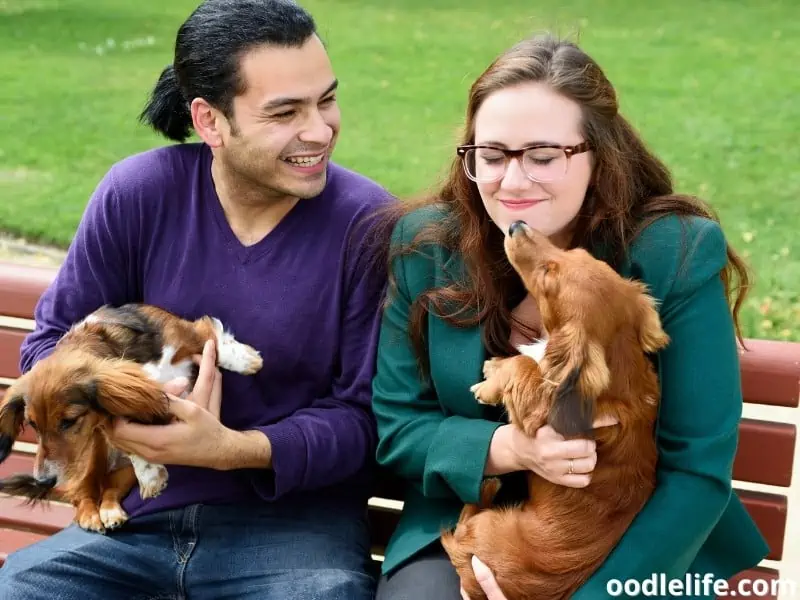
So go ahead, take your pup on casual strolls to the park or invite some friends over for a puppy playdate. Just remember to keep it positive and safe to help your puppy have the best experiences possible.
Comfort
Finally, holding a puppy provides them with a sense of comfort and security. When faced with unfamiliar situations, a puppy may feel anxious or uncertain. By holding them and providing reassurance, we let them know that they’re not alone in this big, sometimes-scary world.
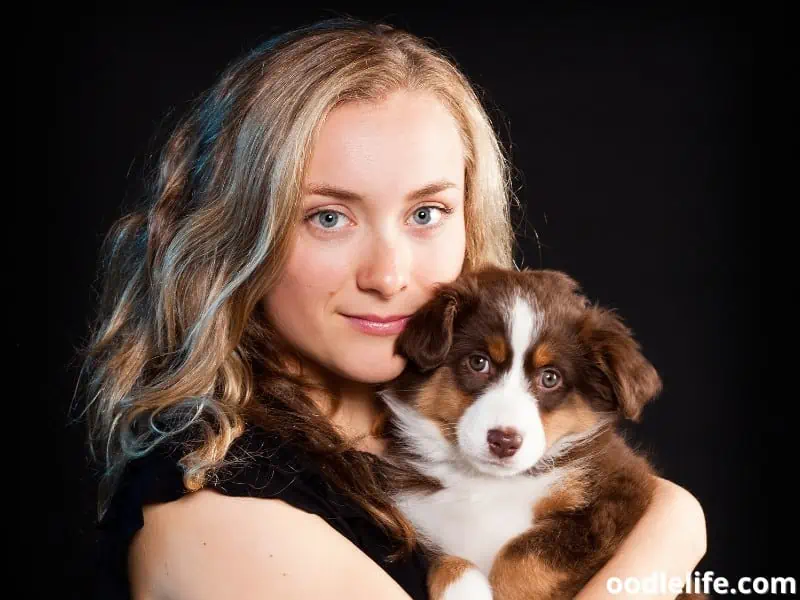
Just think of it as a cozy, furry hug that puts both you and your pup at ease. And bonus points: you get to enjoy those adorable puppy cuddles!
While it’s true that you can’t spoil a puppy with too much love, it’s also essential to find a balance. Provide endless affection, but also give your little furball plenty of opportunities to learn, grow, and explore their surroundings independently. After all, a confident, knowledgeable, and well-rounded pup is one that will fill your life with joy and laughter.
So go ahead, shower your four-legged friend with love, but always remember the importance of balance in fostering a strong human-puppy bond.
Puppy Training and Spoiling
Training Commands
Puppy training is crucial for establishing good behavior and boundaries. It’s important not to constantly coddle your puppy or give them endless treats without having them work for it. This can create a spoiled and misbehaved dog.
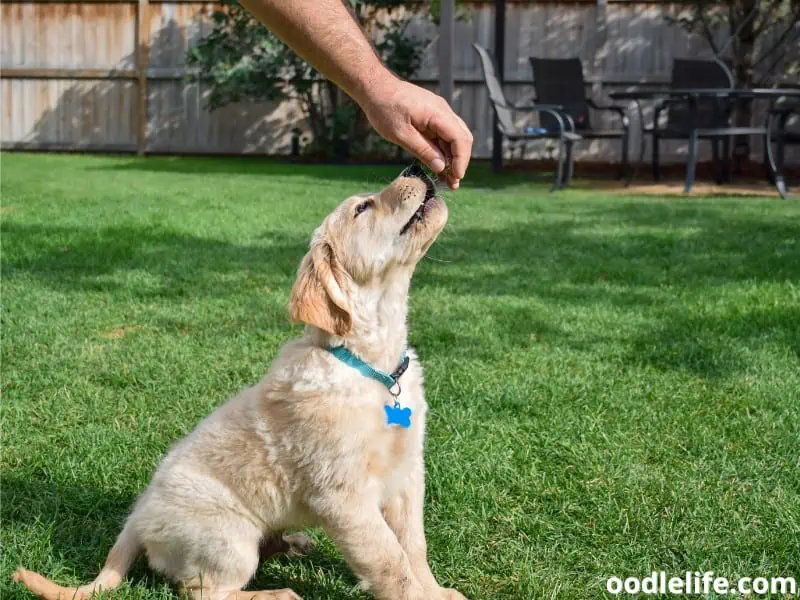
Be confident and knowledgeable when teaching basic commands such as “sit,” “stay,” and “come.” Remember, you’re trying to establish mutual respect and understanding between you and your four-legged companion, so use clear and consistent ways to communicate with them. Keep in mind that rewards should be earned, not given freely.
Potty Training
When it comes to potty training, you need to establish a routine and set expectations. Spoiling your puppy by never setting boundaries can make this process difficult. For example, if they have an accident indoors and you don’t correct them, they might assume it’s acceptable behavior.
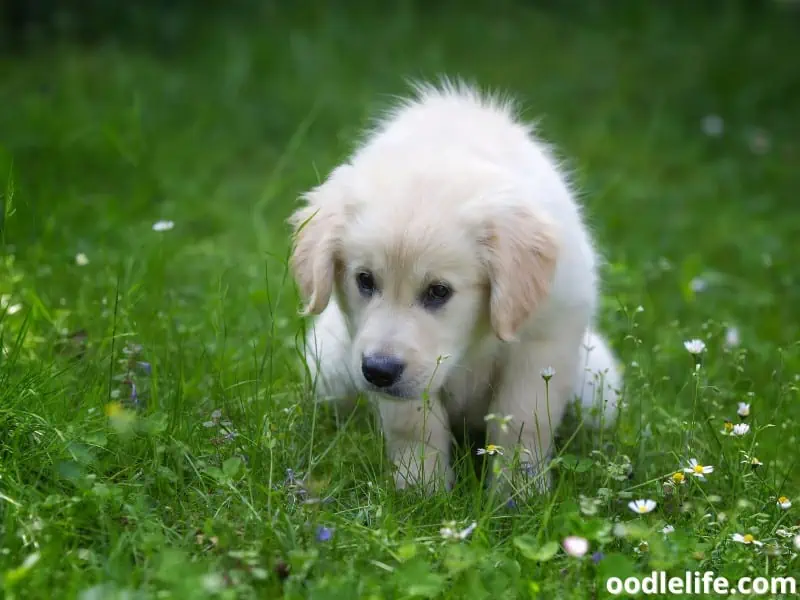
Keep in mind that potty training takes time and patience. Consistently take your puppy outside at regular intervals, praise them when they relieve themselves outdoors, and be patient if accidents happen.
Crate Training
Crate training can provide a sense of security for your puppy, but be mindful not to make them overly dependent on it. If you’re always holding your puppy and never encouraging them to explore their crate, they may develop anxiety when separated from you. Introduce the crate gradually, making it a positive and comfortable space for them.
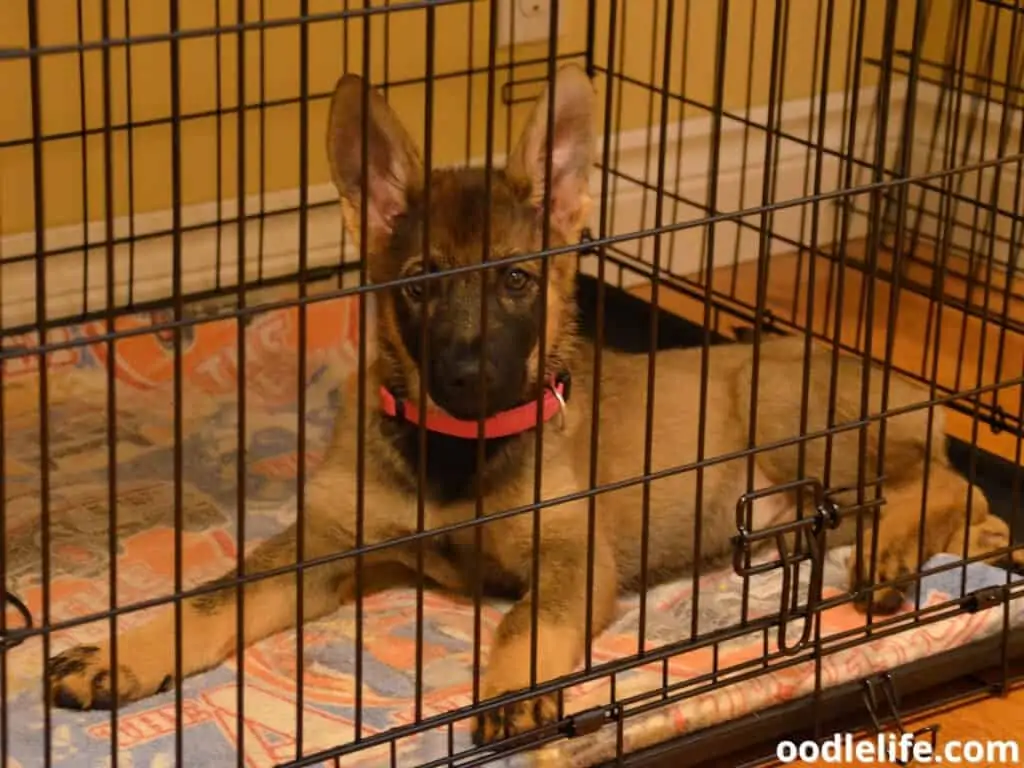
Remember, the goal is to create a safe and relaxing environment, not to confine your puppy excessively.
Anxiety Issues
Anxiety issues can arise when puppies are spoiled or held too much. Excessive coddling can lead to separation anxiety, making it difficult for your puppy to be alone or cope with changes in their environment. Addressing these issues means setting clear boundaries and giving them space to develop independence.
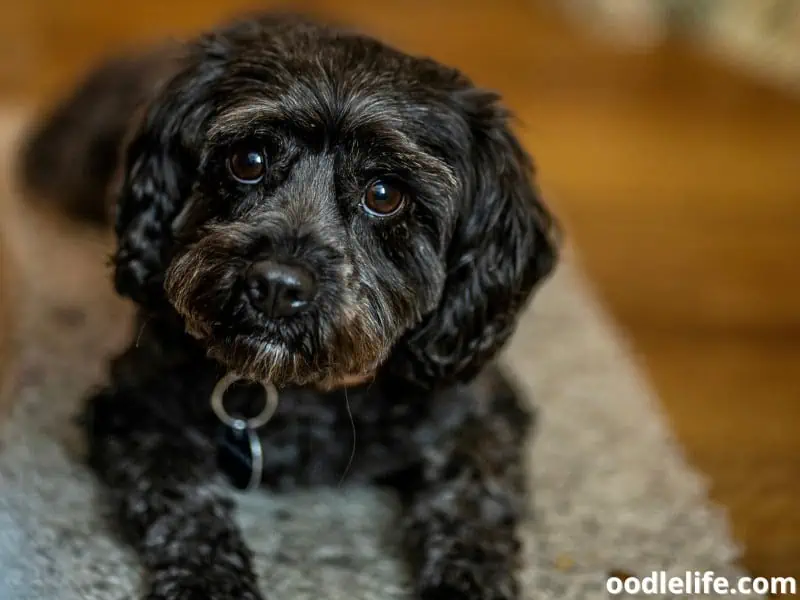
Encourage your puppy to explore their surroundings and play independently, while still providing positive reinforcement and love. The key is finding the right balance between affection and discipline.
Remember, training your puppy is both rewarding and challenging, but with a mix of confidence, knowledge, and humor, you’ll build a bond that lasts a lifetime.
Handling Puppies with Care
Puppies are adorable little creatures, and it’s only natural that we want to pick them up and cuddle them. However, it’s essential to handle them with care to ensure their safety and comfort. In this section, we’ll explore proper holding techniques and how to handle different breeds of puppies.
Holding Techniques
When picking up a puppy, it’s crucial to use gentle movements and provide adequate support for their body.
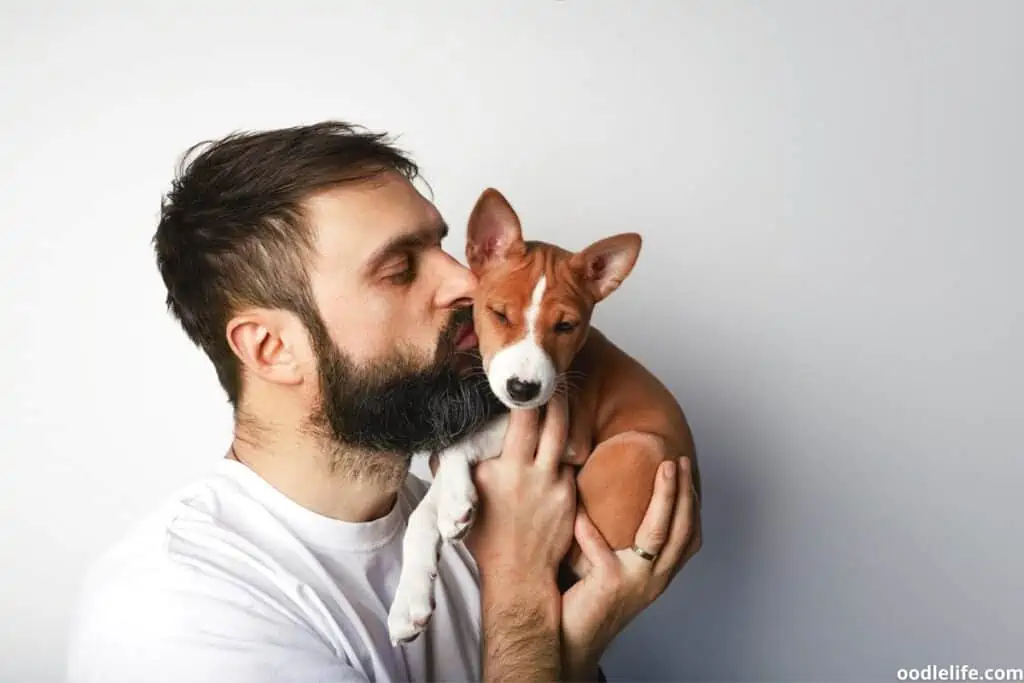
A good technique involves:
- Placing one hand under their chest, between their front legs.
- Carefully sliding your other hand under their hindquarters, supporting their rear legs.
- Gently lifting the puppy, holding them close to your body. This creates a sense of security and minimizes squirming.
Remember to always use a gentle touch when handling puppies, as they can be quite fragile. And don’t forget to put them down with the same care, ensuring their legs touch the ground first before releasing your hold.
Handling Different Breeds
Different breeds of puppies may require slight adjustments to your handling technique, primarily due to size and body shape.

Here are a few tips for handling various breeds:
- Small breeds: Be extra cautious when picking up tiny puppies, as their fragile bones can be easily injured. Use your hands to provide ample support for their entire body.
- Large breeds: When lifting larger puppies, ensure you have a firm grip and adequate support for their weight. Remember, the heavier the dog, the more challenging it can be to hold them comfortably and securely.
- Long-bodied breeds: For puppies with elongated bodies, such as Dachshunds, it’s essential to provide added support for their spine. Ensure your hand placement covers both their chest and hindquarters to prevent injury.
By following these guidelines, you can confidently handle puppies with care. Remember that puppies are delicate creatures, so take your time and use gentle movements to ensure their safety and comfort. Happy cuddling!
Puppy Behavior and Social Anxiety
Understanding Whining and Stress
When it comes to puppy behavior, it’s important to recognize whining and stress signals. Puppies might whine for various reasons, such as hunger, discomfort, or fear. In some cases, excessive whining may be an indicator of social anxiety or separation anxiety.
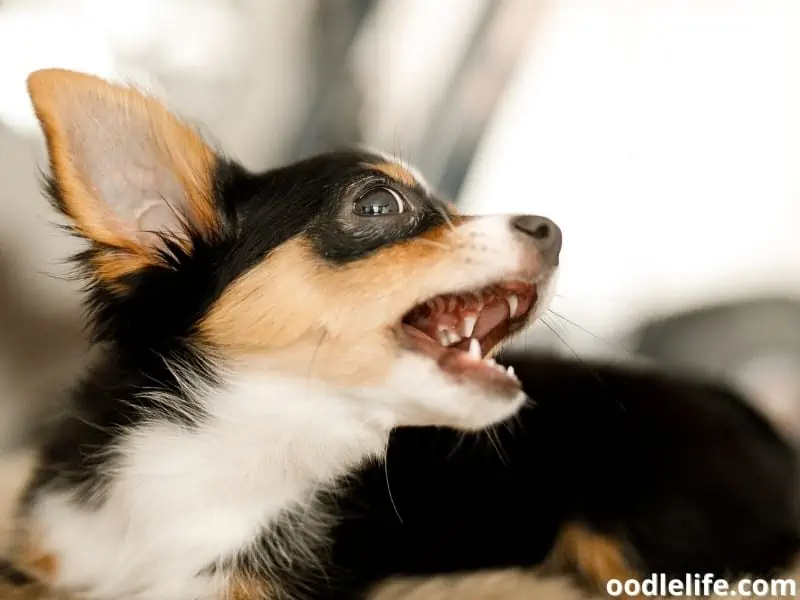
For instance, if your pup is whining excessively every time you leave the room, it could signal that they’re feeling anxious about being left alone.
Stress in puppies can manifest in different ways. Some signs of stress may include:
- Excessive licking
- Panting
- Pacing
- Avoidance or hiding
- Shaking or trembling
These behaviors can be more prevalent in pups that are not given enough socialization or are exposed to too much stimulation during their early development.
Preventing Anxiety Issues
To prevent anxiety issues, it’s essential to strike a balance between providing comfort and fostering independence. While it’s normal to want to hold and comfort your puppy, holding them too much can inadvertently create dependence and hinder their ability to cope with stress on their own.
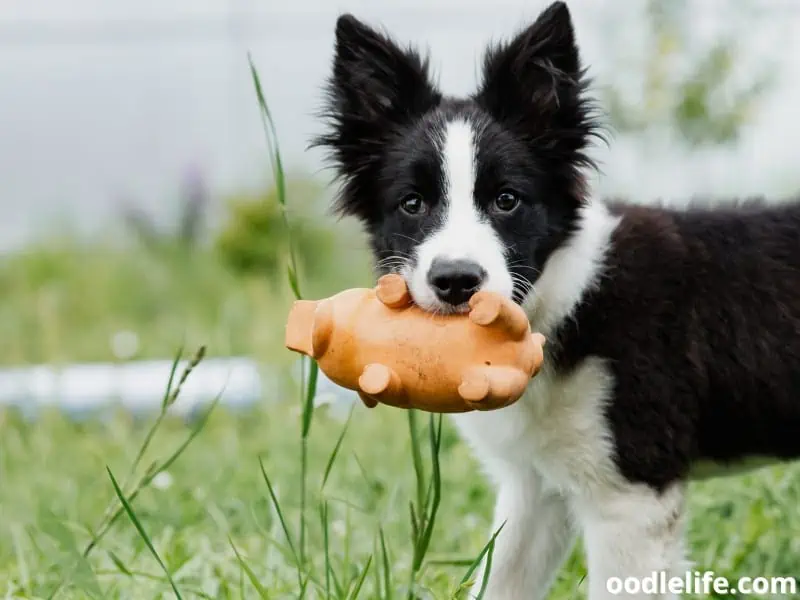
Here are a few tips for preventing anxiety issues in puppies:
- Socialization: Expose your pup to various people, animals, and environments gradually and positively. This will help them develop confidence and adapt to new situations.
- Puppy-appropriate stress relief: Provide your pup with age-appropriate toys and activities to keep them mentally and physically stimulated.
- Independence: Encourage your puppy to explore on their own and spend some time alone in a safe space, like a crate or a playpen, to build their self-reliance.
- Training: Teach your pup basic obedience commands and practice crate training, which can help with separation anxiety.
In conclusion, being mindful of your pup’s behavior and providing a balance between comfort, independence, and socialization can prevent anxiety issues and promote a happy, confident, and obedient dog.
Proper Puppy Playtime and Exercise
Importance of Exercise
Exercise is essential for your puppy’s health and happiness. So, here’s some good news: you can’t hold a puppy too much when it comes to playtime and exercise. Regularly engaging in physical activity not only keeps your furry friend fit and healthy but also helps with mental stimulation and socialization.
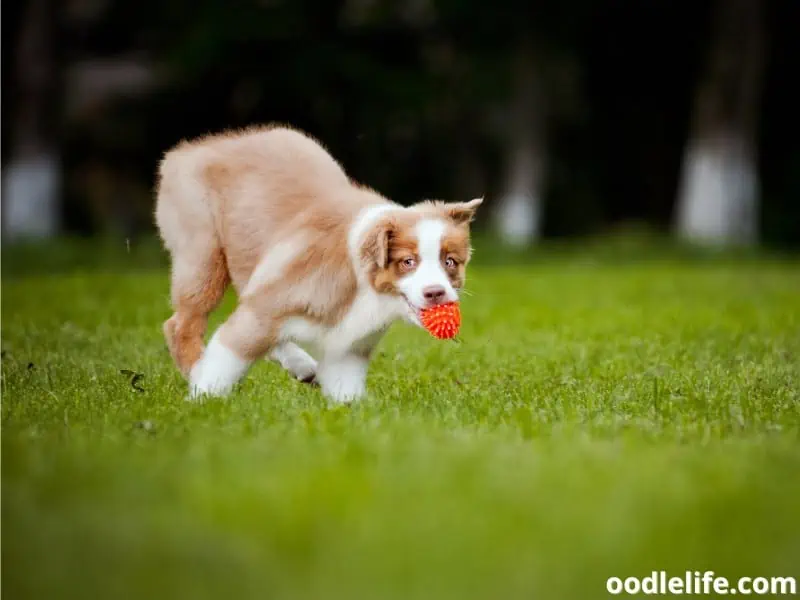
Remember the movie Legally Blonde? Just like Elle Woods said, “Exercise gives you endorphins. Endorphins make you happy.”
This statement rings true for our canine companions as well! Whether it’s a game of fetch or a leisurely walk around the neighborhood, a proper dose of exercise can work wonders for your puppy’s mood.
Dog Toys and Activities
Incorporating toys into playtime can add an extra layer of excitement and stimulation for your puppy. From squeaky toys to chewy bones, the variety of dog toys available on the market can cater to every pup’s preference.
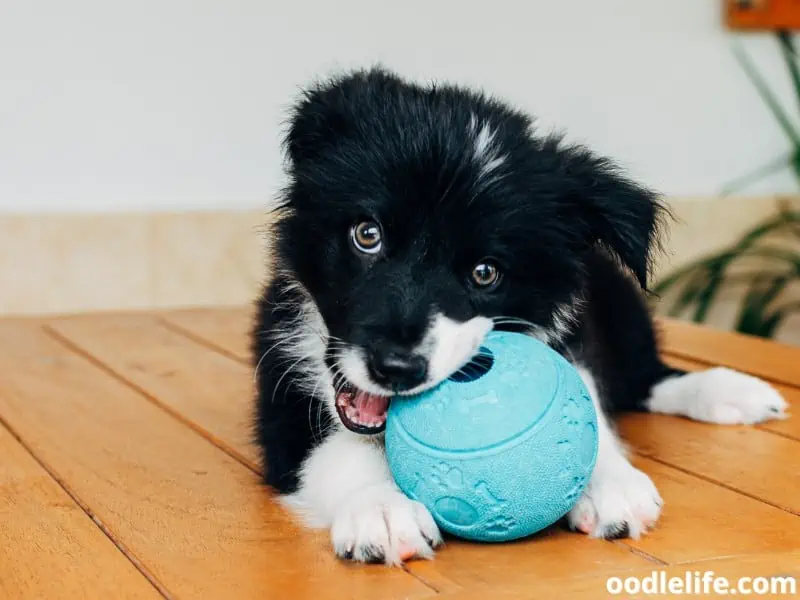
For example, puzzle toys that dispense treats can keep your puppy’s mind sharp and focused. On the other hand, a good ol’ tennis ball thrown in the park is a classic choice for dogs that enjoy running and fetching.
Here’s a tip if you’re on a budget: repurpose everyday items as dog toys! Use an old towel to play tug-of-war, or stuff an empty water bottle into a sock to create an alluring crinkly toy.
Remember, moderation is key. While you can’t hold a puppy too much during playtime, it’s essential to strike the right balance between exercise, attention, and rest. Always make sure your furry friend has ample opportunities to wind down in between sessions.
After all, puppies have a knack for taking power naps!
Now go ahead, unleash the child within you and have a blast playing with your furball. And as a wise person once said, “Let the tails wag and the doggies play!”
Children and Puppy Interaction
Teaching Kids to Hold Puppies Properly
When introducing a child to a puppy, it’s essential to teach them the correct way to hold and handle the furry friend. First, make sure the child is seated comfortably on the ground, as this will provide a stable and secure base for both the child and the puppy. Emphasize the importance of being gentle, as puppies can be more fragile than they appear.
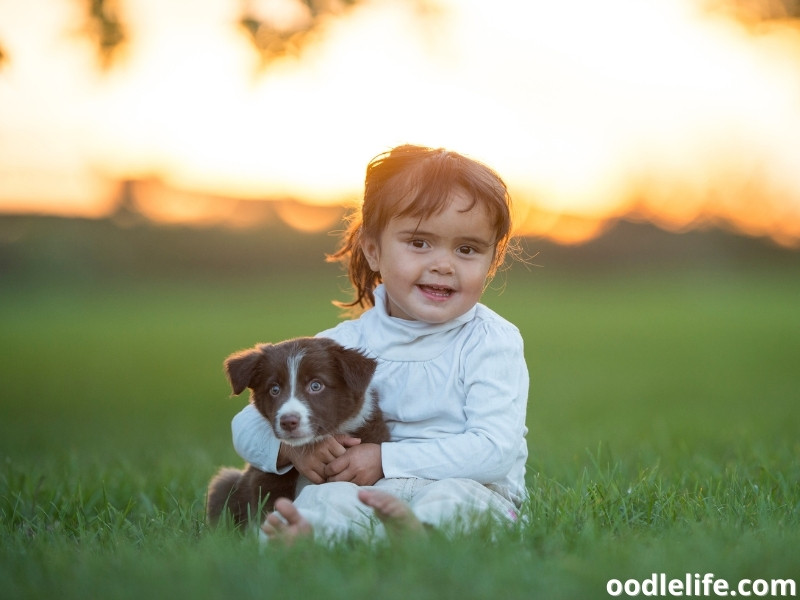
Guide the child to use both hands to support the puppy, with one hand under the puppy’s chest and the other beneath the hind legs. This support will help to ensure that the puppy feels safe and secure. Praise the child’s success with words like “good job” or “well done,” creating a positive association for both the child and the puppy.
Preventing Accidents
Supervision is crucial when children and puppies interact. Puppies can be unpredictable, while children may not always understand their own strength or the appropriate boundaries. To minimize the risk of accidents, teach children not to squeeze or shake the puppy and never to pick it up by pulling on its limbs or tail.
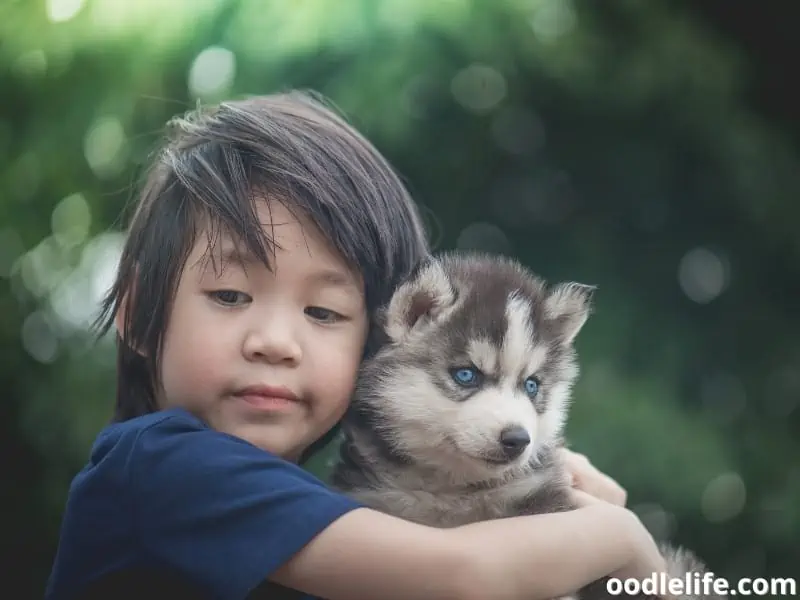
Encourage kids to avoid rough play, as this could lead to misunderstandings or injuries for both parties.
When a child is holding a puppy, ensure that they are not smothering or gripping the puppy too tightly. Instead, they should allow the puppy to have some room to move and breathe. Remember, puppies need personal space and can’t be held all the time.
Using a conversational tone and some humor can make these guidelines more digestible for children. Remind them, “We want our puppy to feel like they’re attending a fancy puppy spa, not being squeezed by a friendly giant.”